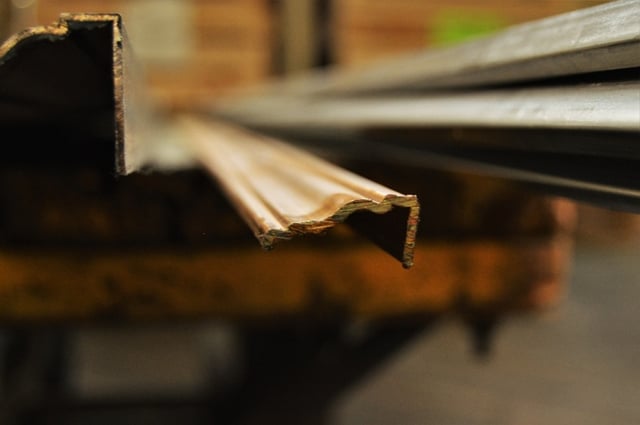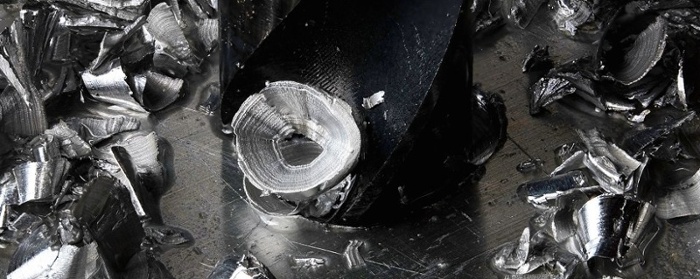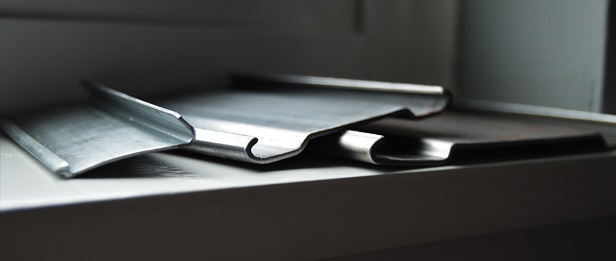Decorative Metal Trim: Material & Finish Options for Form, Function
 Which type of decorative metal trim finish is right for your project? It depends on the basis of the specification. “Form or function?” is the basic question so many architectures have wrestled with over the years, and it applies even to decorative accents.
Which type of decorative metal trim finish is right for your project? It depends on the basis of the specification. “Form or function?” is the basic question so many architectures have wrestled with over the years, and it applies even to decorative accents.
Know this before we continue: Roll forming companies generally don’t do finishing themselves. You may, however, be able to find a metal manufacturer who provides finishing services through a contracted partner. But if you want to take the uniqueness of metal trim a step further, it’s definitely worth a look.
Decorative Metal Trim: Specifying for Appearance
Are specifying a trim based on the aesthetics you want? There are more ideas and techniques out there than ever before. Here are some of them:
1. Rusted Steel (or Iron!)
A few years ago many trend-seeking designers started asking for rusted steel. You can probably see why: In the right style of interior, it would look charming. Examples include:
- Industrial
- Weathered wood
- Other old looks
You can intentionally accelerate the rusting process to get the desired effect -- it takes skill, though. Afterward, make sure to get a clear coat on soon to seal it. This will retain the look and prevent unpleasant effects like red dust transfer and continued oxidation.
2. Sublimation
Ever given your metal a bath? During sublimation, the engineer submerges the metal, then pulls it out. The desired aesthetic properties get transferred onto your part.
An example of this finish is the camouflage you see on all-terrain vehicles. In architecture, sublimation is a means to put a stone or other non-metal look on a metal moulding.
3. Bronze & Copper
Bronze and copper start you off with a luxury look other materials simply can’t match. But for some, the real fun begins after they oxidate. The patina effect changes their color to a pleasing green (see: Statue of Liberty).
4. Galvanized Steel
While known for giving cost-effective protection, galvanized steel can also provide an industrialized look. When galvanized steel weathers and oxidized zinc forms, the coating turns a uniform matte gray.
If you don’t want that attractive, natural finish, you can easily get it painted or powder coated.
5. Stainless Steel
Stainless steel is celebrated for its shiny, reflective, and clean surface. You can buy stainless with a bright polished finish or a brushed finish. It can have different degrees of “aggressiveness.”
Specifying for Function
If your trim will take more abuse than, say, a cornice lounging inside a comfy hotel room, you may need something more corrosion-resistant.
Will there be chemicals around? Will your work stand outdoors with exposure to frequent precipitation or saltwater? These are the best metals for exterior work:
- Stainless steel
- Copper
- Bronze
If your work will remain indoors, you could opt for cold-rolled (with or without paint) or galvanized steel. Galvanization adds zinc to provide a protective coating at a modest cost.
If you want to post-finish it, you can try using galvannealed steel, as it accepts paint well. This coating is harder than galvanization and therefore more resistant to scratching.
If you want a long-lasting, outdoors-friendly material that still screams “classy,” use a red metal (bronze, copper, brass) for the patina effect. These are especially impactful in coastal construction and can last hundreds of years!
Don’t forget you can use powder coating on steel and other metals. Powder coating is a decorative and protective finish that makes a metal surface more resistant to:
- Fading
- Scratching
- Chipping
- Other wearing
Where Will You Upgrade?
Material choice isn’t the only big decision for a designer. If you want exquisite metal accents for your building, you’ve got more work to do -- like identifying where and how to use mouldings. You may want to try:
- Baseboards
- Crown mouldings
- Picture mouldings
- Door casings
- Something else
Whether you’re new to metal architecture or have experience, talking to a roll forming vendor before buying can improve the quality of your project. An experienced partner can fill you in on the best choices for decorative metal trim -- whether you’re in it for looks or long-lasting quality.
You May Also Like
These Related Stories

Choosing Your Aesthetic for Architectural Metal Mouldings

So You're Installing Commercial Metal Trim Moulding ... Now What?




